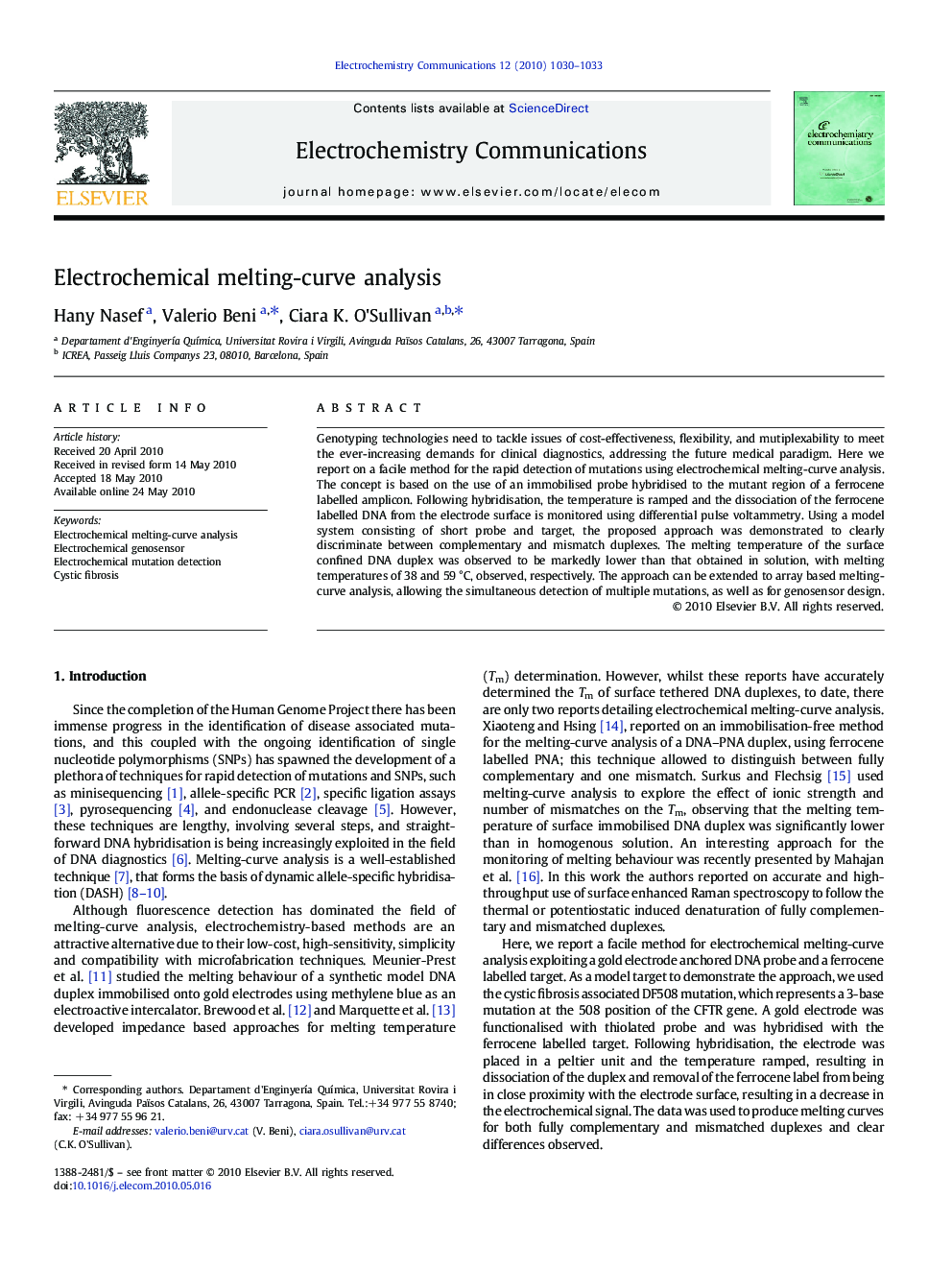| Article ID | Journal | Published Year | Pages | File Type |
|---|---|---|---|---|
| 180966 | Electrochemistry Communications | 2010 | 4 Pages |
Genotyping technologies need to tackle issues of cost-effectiveness, flexibility, and mutiplexability to meet the ever-increasing demands for clinical diagnostics, addressing the future medical paradigm. Here we report on a facile method for the rapid detection of mutations using electrochemical melting-curve analysis. The concept is based on the use of an immobilised probe hybridised to the mutant region of a ferrocene labelled amplicon. Following hybridisation, the temperature is ramped and the dissociation of the ferrocene labelled DNA from the electrode surface is monitored using differential pulse voltammetry. Using a model system consisting of short probe and target, the proposed approach was demonstrated to clearly discriminate between complementary and mismatch duplexes. The melting temperature of the surface confined DNA duplex was observed to be markedly lower than that obtained in solution, with melting temperatures of 38 and 59 °C, observed, respectively. The approach can be extended to array based melting-curve analysis, allowing the simultaneous detection of multiple mutations, as well as for genosensor design.
